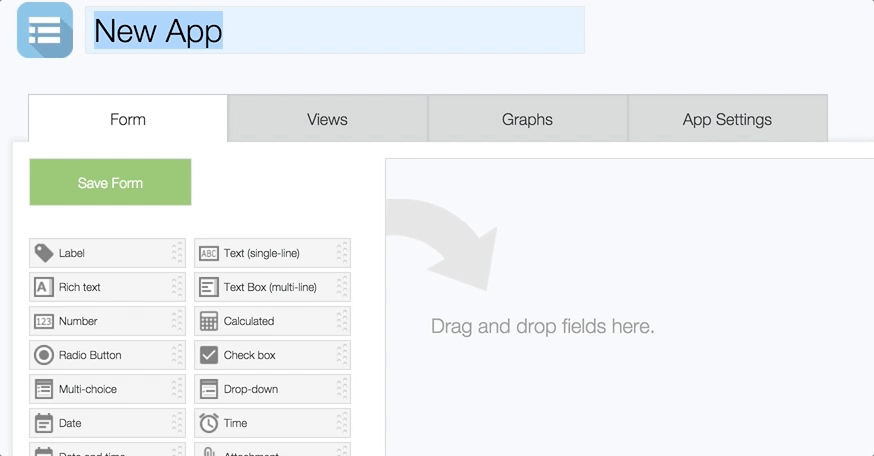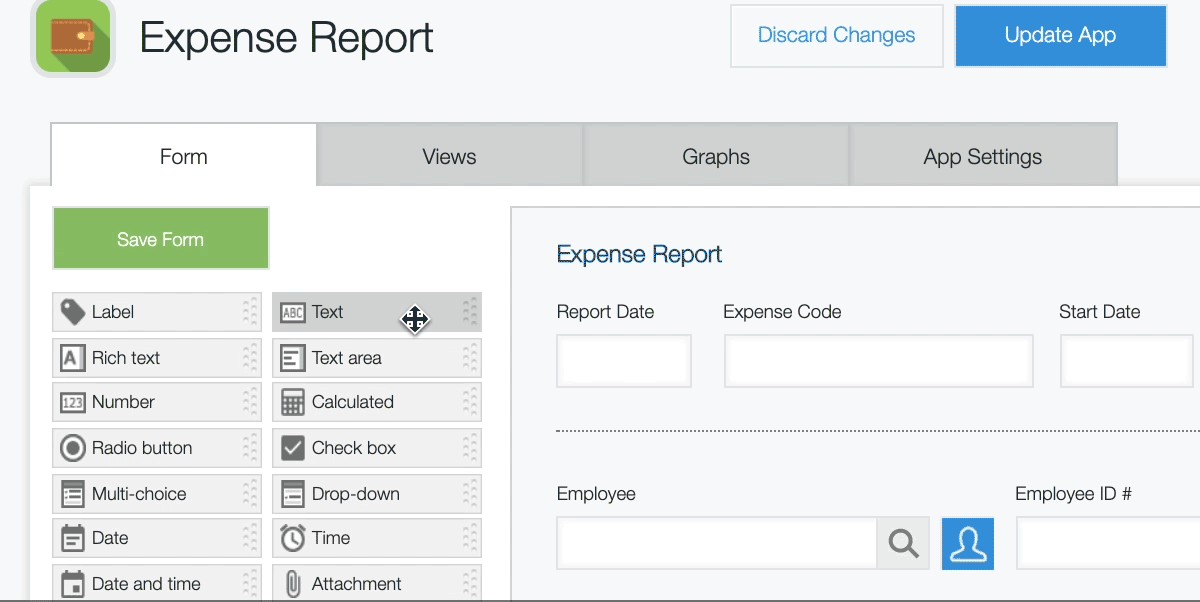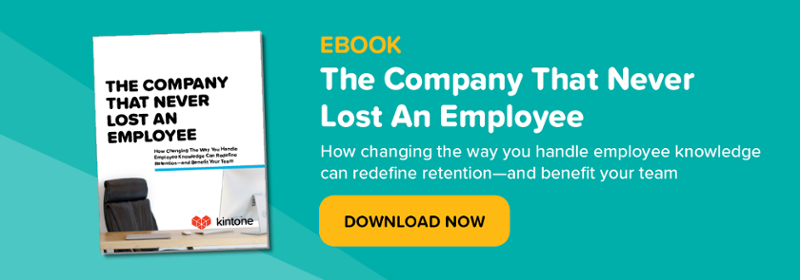In the past twenty-five years or so since the first dotcom boom, the general approach to business software has largely been the same: more, more, more.
Software has transformed the way we live—and it’s fundamentally changed the way we do our jobs. But are more business apps really what we need to do our best, most collaborative, and most profitable work together?
We doubt it. Today, organizations are working with a gigantic toolbox of apps—all specially designed for specific tasks—and all living in disparate, disconnected systems. We don’t just have more software, we have too much. And too much business software is dividing our attention, our data, and our time.
Don’t believe it? Here are a few data points on the subject:
7 key stats on business app usage
- The average worker switches between 35 job-critical applications more than 1,100 times a day. (Pegasystems)
- Workers complete an average of 134 copy-paste actions, and 845 keyboard errors per day. (Pegasystems)
- Large firms use an average of 129 software apps per company, a 68% increase in the last four years. (Okta)
- Small and medium businesses use an average of 73 software apps. (Okta)
- 10% of businesses use more than 200 applications for work (Okta)
- 73% of companies found that employees spend more than an hour per day moving between business applications. (Mavenlink)
- On average, knowledge workers spend nearly 20 percent [of their week] looking for internal information. (McKinsey Global Institute)
The fact is, more isn’t always better. A software ecosystem with too many apps in it can and will create its own chokepoints, keeping teams and individuals from reaching their performance potential. Moreover, continuing down this path will only ensure that those employees will continue to experience more frustration and angst about their jobs.
The Challenge of Convenience
You may be satisfied with the framework of point solutions you’ve put together. But if you plan to scale, stay efficient, and stay competitive, you’re going to have to make a change—here’s why. In repeatedly turning to software to solve our business problems, we’ve all started to drown in our own solutions—and it’s simply not sustainable.
Workers who use more than 30 applications in a day have error rates 28% higher than those using fewer applications, and when the average knowledge worker is switching between 35 applications over 1,100 times a day, it means they’re making 28% more errors every day than they would be with fewer solutions. Per month, average employees use more than 90 different applications. When we expand the metric to years, it’s not just applications and errors that continue to multiply—so does the amount of time spent toggling, resulting in hours, days, and even weeks of wasted time.
More Software, More Problems
All of those seemingly minor inconveniences add up, taking their tolls on worker satisfaction. According to a report by RingCentral, 68% of workers toggle between applications up to 10 times an hour. Furthermore, more than two-thirds of workers report they waste up to 60 minutes a day navigating between apps—and 17% waste even more. This can add up to 32 days a year wasted juggling the very applications implemented to improve businesses efficiency and productivity in the first place. To put employee frustration in perspective: 53% of workers say they’d rather do household chores than navigate between applications, and 52% say they’d rather pay bills than deal with the hassle of toggling.
The more applications you add, the more time and satisfaction you lose. It’s not sustainable, and the costs are significant. Those 32 days per employee cost businesses hundreds of billions of dollars a year—and they might not even realize it. Plus, it doesn’t even include the cost of the applications themselves. Whether it’s annual fees, added premiums, or monthly subscriptions, business software is rarely free—and the more additions, the more zeros you add to the bill.
In a 2017 workplace survey conducted by Harmon.ie, a technology company and Microsoft partner, respondents were asked how they feel about app usage in the workplace. 48% of respondents answered, “I find apps are useful for performing certain tasks, but they make information too disjointed.” Runner up answers included “I feel I spend too long switching between apps looking for information” and “Sometimes I can’t see the bigger picture as information is too disjointed.” of the app economy.”
Keeping, maintaining, and updating such a high volume of solutions is nearly impossible, and as you move more business-critical data into these solutions, you increase your risk of security breaches and data fractures. Think back to the 845 keyboard errors the average employee makes in a day. How high-stakes could just one of these slip-ups be? Keeping security measures up to date is even trickier than it seems, because you probably don’t even know how many applications are running across your organization at a given time. When different teams and departments find and implement software independently from the IT department, it creates shadow IT—and shadow IT accounts for 30 to 40% of technology spending at large enterprises.
A Few Good Apps: The Dream of Centralization is Alive
There’s no question that the specialized solutions you rely on are necessary to do your job. But piling on more and more single-point solutions isn’t just unsustainable—it’s damaging to your data integrity, your ability to work effectively, and your overall satisfaction. So how do you get the specialization you see without succumbing to the problems most modern solutions present? By choosing tools that allow us specialization without decentralization.
There’s a solution you can choose without giving up control, and without sacrificing on customization, quality, or cost. The gist of it is this: instead of sourcing 40 specialized solutions from 40 different vendors, you can get 40 specialized solutions from one vendor. It’s specialized software without all of the separate packaging, and the first step is centralization.
By switching to a cloud-based, centralized workflow platform, your business data—everything from your last conversation with a colleague to last month’s quarterly sales report—will be accessible in one secure, searchable place. Then, you can begin to build specialized solutions from the inside out.
How is this possible? Advances in how software development are not only changing the solutions and platforms we can create—but also who can create them. New business software tools are allowing organizations to create the sophisticated solutions they need inside of a single platform—with integrated security and maintenance management built in.
These emerging tools make it possible for anyone to create their own software, customized to specific needs and tasks— all without buying new software solutions, purchasing new subscriptions, and or hacking together workarounds that rely on extra steps like copy and pasting. By layering a visual design engine on top of a cloud-based platform, your organization can create and customize a digital workspace that matches your process and workflow needs exactly. No more shortcuts, and no more sacrifices.
We’re Basically in George Jetson’s Future
Platform solutions aren’t new, but they’re gaining greater adoption in the era of too many point solutions. And the newest version doesn’t just centralize data, it also allows users to customize their business applications from scratch, no IT team required.

Featured above is the drag-and-drop interface of Kintone’s platform. Kintone is a no-code/low-code platform that allows users to create their own custom enterprise applications in a centralized, cloud-based platform.
This doesn’t just reduce all of the risks associated with point solutions, it means your organization is no longer faced with fighting a sea of decisions: leaders will no longer need to spend time choosing between a hundred new potential solutions that only fix one or two of your business problems. Instead, they’ll be faced with a comprehensive, common ground solution customized to solve all of your business problems—and meet everyone’s individualized needs.
The beauty of no-code platforms is in allowing individuals to streamline their workflows, teams to collaborate and more effectively, and even create a way for entire companies to build apps to manage their business processes from one single platform.
The driving idea behind this new movement in software is visual programming—a form of software development that’s visually-based rather than textually-based. It puts the power to build software in anyone’s hands, removing the complexities of coding languages and the barriers of intensive training. Visual programming gives every employee the ability to create their own specialized solutions—built around their own business data, role-specific tasks, and personalized workflows.

No-code platforms give you the ability to custom design your workflows exactly the way you want, without having to write a line of code. Here's an example of someone building an expense report in Kintone's platform.
It sounds complex, but it couldn’t be more simple. The user interfaces of visual programming tools are drag-and-drop. It’s a flexible, highly customizable form of software development that takes a fraction of a time to learn compared to a new coding language. And it’ll transform every aspect of your business operations.
Why Fewer Apps Yield Greater Results
With a cloud-based, centralized, integrated platform, you remove disparate storage solutions, break free from company-wide data silos, and restore the hours spent searching for information that’s somewhere else. You can access any business information with greater ease, speed, and simplicity than you probably ever thought possible. You can customize databases that organize, analyze, and visualize your unique business data without needing to close—or open—a single tab, let alone a separate application. In general, applications will no longer be external entities that you purchase, download, integrate and adapt to your data— they’ll be extensions of your data.
They’ll be intuitive tools you create as you go to get your daily tasks done. And each and every one will stem from the same, singular software solution. With this new approach, the core inefficiencies of your business: the time, money, and labor lost each day to things like information searching and application switching, won’t just improve—many of them will disappear completely.
READ ALSO: 7 Ways No-Code Platforms Can Drastically Improve Your Workflows
A centralized, integrated platform with visual programming capabilities streamlines workflow productivity, efficiency, and profitability in ways that were, and for many people still are, entirely unimaginable. And the craziest part is, it’s not a simple solution for a simple problem. It’s a simple solution for a problem that we’ve all spent 20 years, trillions of dollars, and countless innovations trying to solve. Forrester estimates that visual programming methods can develop software up to 10 times faster than traditional methods. It’s not just remedying age-old business and IT problems of inefficiency and backlog, it’s propelling you farther forward at a faster speed than you ever could have gone otherwise.
This is how you do it. This is how you simplify, streamline, and smooth out the processes that get in the way of your ability to do—and enjoy—your job, every single day. This is how you go from hundreds of workarounds and off-the-shelf point solutions to one. And when employees across your entire organization are free from 134 copy and pastes and 1,100 application switches a day, when they no longer wake up every day to perform tasks they dread more than doing their dishes or paying bills, the results will be astounding.
About the Author
Mark is an avid writer with a ton of experience in journalism, experience design, performance, and event production. He also has impeccable taste in music. He currently lives and works as a writer/editor in the SF Bay Area. When he's not working, he's probably either spinning records or scoring goals on a bike polo court near you.











